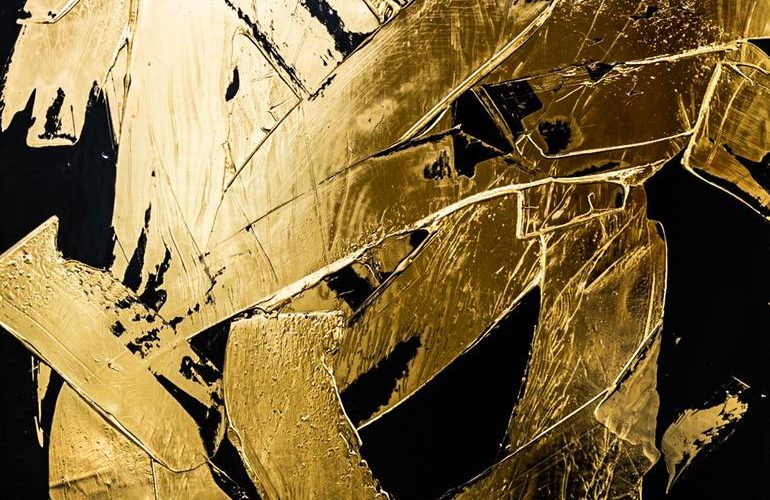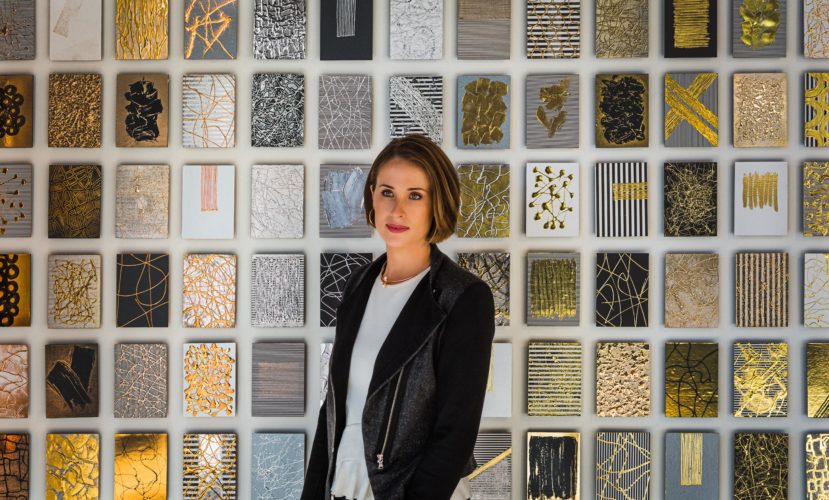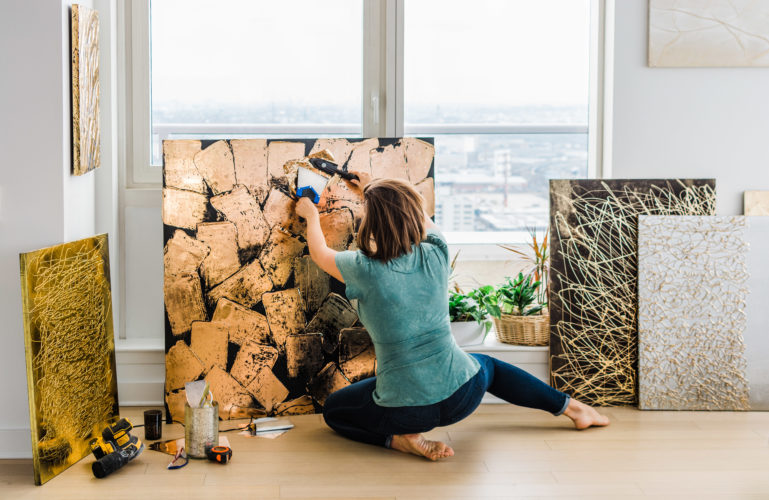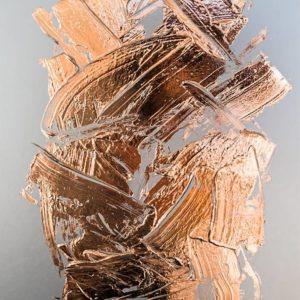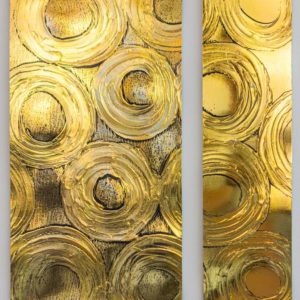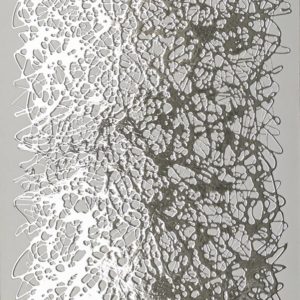The Others
 Meet the Others: M. Clark
Meet the Others: M. Clark
The Game Changers. The Rule Breakers. The Innovators. Discover some of the fantastic emerging talent showcasing their work at The Other Art Fair.
M. Clark creates dynamic conversations between constancy and chaos by manipulating heat and pressure to adhere metallic foil to varied surfaces.
Her pieces reflect light in diffuse patterns producing a shifting luminosity that is unique to her work.
Q&A with the Artist
Tell us about who you are and what you do. What is your background?
I grew up in mountainous Idaho but happily settled in New York City where I live with a calm husband and an exuberant dog named Francine. After years in Manhattan designing blush-colored perfume bottles for Estee Lauder and sleek catalog layouts for companies like West Elm, I quit my job and plunged into Fine Art. I didn’t give up Graphic Design entirely. I still consult as an Art Director because when I do both–Fine Art and Graphic Design–I am better at both. I love that my graphic design work is client-focused and filled with hard deadlines–and then I get to move to my Fine Art where the rules are the ones I make.
In addition to working at two art disciplines, I also speak around the country about the stigmas associated with dyslexia, and the shame caused by inaccurate or missing information. My pattern is to lead a discussion and then work with my audience on an art project. Getting the words to describe what happens differently for me when I decipher shapes was powerful. I now know that the way I see shapes and spaces is part of why I am a good artist. And graphic designer. I work to share what I know so others can more easily–easier than I did–claim their own strengths.
https://www.instagram.com/p/B5Tf7LHHFl8/
What are the major themes you pursue in your work?
The most dominant theme in my work is the negotiation between chaos and order. There is nothing haphazard about the way I create my artwork. I plan the piece and I use my extensive experience and training to shape it. But after careful composition, I submit it to heat and pressure that I calibrate but can’t totally control. Applying heat and pressure in this way means that my work may emerge differently than I anticipated! And that is sometimes devastating and sometimes thrilling.
The work I do is always non-objective and designed to evoke feelings. Most important is composition, not representation. And it works. People will stand back, look at one of my pieces, and say, “I know someone like that” or ‘Yeah, I’m having that kind of day.” The composition is fixed but the feelings it draws out are entirely variable.
How did you first get interested in your medium and what draws you to it specifically?
I was in a restless time and I had a vague idea floating inside of me that wanted to be expressed, so I started playing with new materials and processes. And quickly, I became entirely engaged in–obsessed with-–exploration and invention using foils: what is possible? how can I change it from one thing to another? how can it be layered or sculpted? So, in the beginning, the work was all about the process and it wasn’t very good. It was hard and confusing because there was no one to ask about how to do this thing I was trying, and nowhere to read about it.
As I worked on the process, I fell in love with the foils. There is so much movement in foil that isn’t there for me in traditional mediums. Because metallics are so reflective, they show minute texture and detail so that sometimes it looks like they have multiple surfaces. They feel substantial, tactile, permanent. I have learned to use them sculpturally and to consider their textural properties. It’s all really compelling.
Since I invented my process of applying heat and pressure to foil, I am regularly running up against limits and expanding my understanding of what I can do with the process. If I am careless, or ignorant of the materials, the work is botched and can’t be rescued. This is humbling. And then when it all comes together, I am overwhelmed by the luminosity and variability of the finished art. Not only is each piece unique, but it is unique hour by hour as the light on it changes.
How has your style and practice changed over the years?
The processes I use evolve: they are iterative and incremental. What has changed noticeably in the last few years is my ability to walk away from a piece that is not good or that gets ruined by the heat and pressure. There are compositions that I thought were exceptional–only to see them crumble. That was painful. Now I am much more sanguine about it all because I know that a failed project is a prelude to a successful outcome. It’s a part of what comes next.
Can you walk us through your process? How long do you spend on one work? How do you know when it’s finished?
When a piece survives the rounds of heat and pressure and the result looks promising, I hang it on a wall and watch it for a couple of weeks. I want to see how it interacts with light through the day, which elements are doing their job and which need to be changed. Sometimes the piece is ready after the next layering of materials, but sometimes I go through the “hang, reflect, and try again” process on one work across a couple of months.
What series or project are you working on next?
I am experimenting with new materials! After trying hundreds of materials that are not typically (or ever) used in Fine Art, I am trying mediums from other art disciplines. For instance, I am experimenting with fabrics and the results are interesting. And I am working on a series that will incorporate concrete. So far I am loving the fragility of foils juxtaposed with the substantiality of concrete.
https://www.instagram.com/p/B2aO9A4nryi/
What is the best advice given to you as an artist?
I had a professor who always used to tell us “You are only as good as your obscurest recourse.” I’m not sure I even knew what he meant until I started mixing heat and pressure techniques with foil. During my obsessive process period–which maybe hasn’t ended–I experimented with all kinds of materials and tools that aren’t made for creating art. So, I would offer the same advice in plain terms: experiment wildly; look in unusual places for inspiration and resources; don’t be afraid!
Shop artwork by M and other trailblazing artists at The Other Art Fair’s Online Studios.
Introducing The Other Art Fair Online Studios, a new online platform offering art lovers around the world access to over 800 Fair artists. The Online Studios will keep our community feeling inspired, engaged, and continue to spread joy through art.
